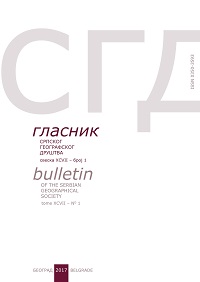Large Cities and Their Traffic – Spatial Aspect
Large Cities and Their Traffic – Spatial Aspect
Author(s): Bojan Vračarević, Miomir JovanovićSubject(s): Geomatics, Rural and urban sociology
Published by: Српско географско друштво
Keywords: urban transport; metro; light rail systems; urban land; world metropolises; Belgrade;
Summary/Abstract: The analysis of the interdependence of transport strategy and the portion of urban land given over to traffic attains its full meaning only in the light of drastically different spatial/physical characteristics of world cities. Advocates of the pro-automobile transport strategy are persistent in their support of the hypothesis that along with the increase in the degree of motorisation of a population, the share of urban land needed for transport unavoidably increases. But it is exactly this spatial aspect that makes transport strategy of the large, proautomobile oriented US cities (that occupy few thousand square kilometres and have extremely low population densities), completely inadequate for the compact, densely populated cities of developing countries and countries in transition. Distinctive features of large cities of the developing world and countries in transition: monocentric, compact spatial structure and extremely high urban densities, are the main causes of extremely high volumes of motorized traffic per unit of urbanized area (in spite of their very low levels of motorization). Supply of urban roads per capita in these metropolises is not going to significantly improve, whatever length of new urban roads they (manage to) construct. That makes them completely unsuitable for pro-automobile transport strategy and, at the same time, very suitable for development of light rail and metro systems, and rigorous traffic limitation policy.
Journal: Гласник Српског географског друштва
- Issue Year: 94/2014
- Issue No: 3
- Page Range: 25-39
- Page Count: 15
- Language: English

